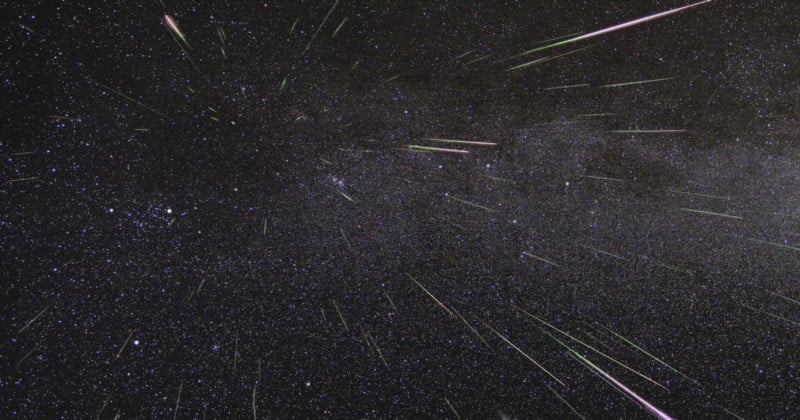What You Need To Know About Tonight’s Perseid Meteor Shower Peak

The Perseid Meteor Shower will reach its peak tonight (August 12) but those looking to photograph this annual celestial event will have to contend with a very bright supermoon known as a Sturgeon Moon.
The Perseid Meteor shower is one of the strongest and most visible meteor showers that takes place from mid-July into September, but reaches its visible peak tonight, August 12, and into the morning of August 13. This peak time means that, typically, upwards of 100 “shooting stars” will be visible per hour.
This year, this event has some overwhelming celestial competition: a Sturgeon Moon. A Sturgeon Moon refers to a supermoon, the name for when the Moon is full while also being at the closest point to Earth in its orbit. As a result, it appears abnormally large and bright in the night sky. It is called a Sturgeon Moon because the giant sturgeon of the Great Lakes and Lake Champlain were easiest to catch during this part of the year, historically. Sadly, these fish are much rarer today due to overfishing, pollution, and damage to their habitat.
The supermoon is going to be so bright and large in the night sky that it will reduce the visibility of the Perseids by a considerable amount.
“Sadly, this year’s Perseids peak will see the worst possible circumstances for spotters,” NASA astronomer Bill Cooke, who leads the Meteoroid Environment Office at NASA’s Marshall Space Flight Center in Huntsville, Alabama, says.
“Most of us in North America would normally see 50 or 60 meteors per hour,” he said, “but this year, during the normal peak, the full Moon will reduce that to 10 to 20 per hour at best.”
Across the United States, the full moon will, unfortunately, be visible all through the night and greatly obscure the meteor shower, according to predictions visible with Stellarium Web.
By the time the bright moon subsides, the Perseids will begin to wane (August 21 through the 22) and be gone entirely by September 1. As a result, unfortunately, this will not be the best year to photograph the Perseid Meteor Shower.
That said, those meteors that will be visible despite the supermoon will be particularly bright, so those who happen to be looking to the skies between midnight and dawn on August 13 may be treated to an unusual celestial combination.
The next major meteor shower of 2022 will be the Geminid meteor shower, which can be enjoyed on December 13 and 14.